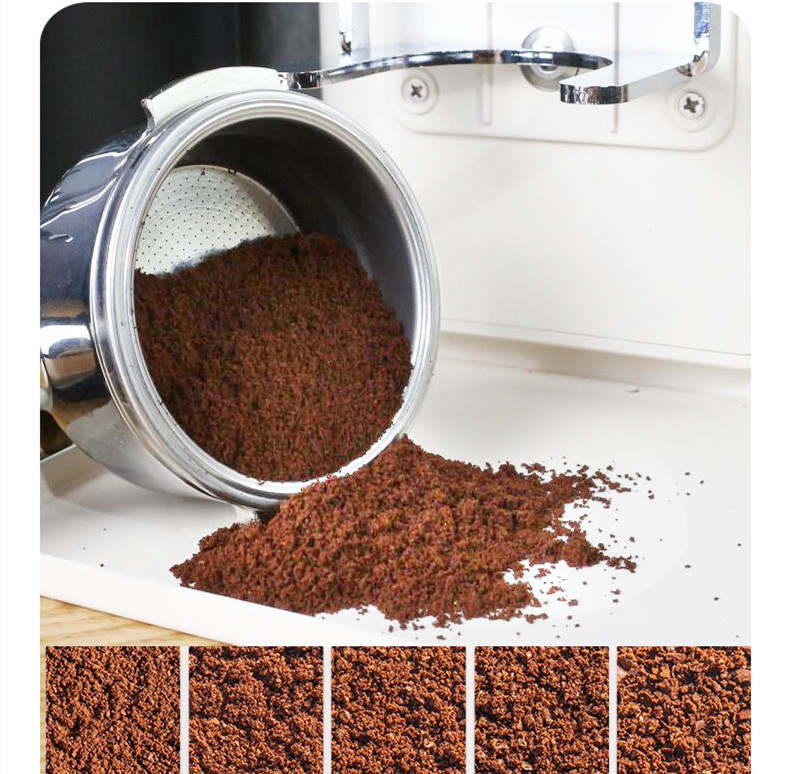Strengthening Brand Identity Through Strategic Coffee Grinding Practices
In an increasingly competitive coffee market, brands must differentiate themselves by emphasizing quality, sustainability, and authenticity. The grinding process, often overlooked as a mere technical step, holds significant potential to elevate brand perception and foster customer loyalty. By refining grinding techniques and integrating them into broader brand narratives, coffee companies can create memorable experiences that resonate with consumers.
Crafting a Unique Flavor Profile Through Precision Grinding
A brand’s flavor signature is its most powerful differentiator. Precision grinding allows brands to control extraction rates, acidity, and body, creating a consistent and recognizable taste that sets them apart.
Tailoring Grind Sizes to Brewing Methods
Brands can develop proprietary grind settings optimized for specific brewing techniques, such as espresso, French press, or cold brew. For example, a brand positioning itself as a specialist in espresso might emphasize ultra-fine, uniform grinds that produce rich crema and balanced flavor. By educating consumers on the ideal grind for each method, brands reinforce their expertise and encourage repeat purchases.
Highlighting Terroir Through Grind Adjustments
Coffee beans from different regions exhibit unique flavor profiles due to variations in soil, climate, and altitude. Brands can use grind calibration to accentuate these terroir-driven characteristics. A coarser grind for a high-altitude Ethiopian coffee might preserve its floral and citrus notes, while a finer grind for a Brazilian bean could emphasize its nutty sweetness. This approach not only showcases the brand’s commitment to quality but also educates consumers about the diversity of coffee origins.
Consistency as a Brand Promise
Inconsistent grinds lead to uneven extraction, resulting in unpredictable flavor profiles. Brands that prioritize grind uniformity—through advanced burr grinders or rigorous quality control—can position themselves as reliable purveyors of premium coffee. Communicating this consistency in marketing materials, such as packaging or social media campaigns, builds trust and encourages long-term customer relationships.
Integrating Sustainability Into Grinding Practices
Consumers are increasingly seeking brands that align with their environmental values. By adopting eco-friendly grinding methods, brands can appeal to this growing demographic and strengthen their ethical credentials.
Energy-Efficient Grinding Technologies
Brands can invest in low-energy grinders or hybrid models that combine manual and electric components. Highlighting these choices in sustainability reports or product descriptions demonstrates a commitment to reducing carbon footprints. For instance, a brand might emphasize that its grinders use 30% less energy than conventional models, appealing to eco-conscious buyers.
Zero-Waste Grinding Initiatives
Coffee grounds, a byproduct of grinding, can be repurposed into compost, biofuels, or skincare products. Brands that implement closed-loop systems—where grounds are collected from cafes or consumers and transformed into new products—can showcase their circular economy practices. This narrative not only reduces waste but also creates storytelling opportunities around innovation and environmental stewardship.
Ethical Sourcing and Local Grinding
Brands that partner with smallholder farmers and process beans locally through decentralized grinding hubs can emphasize their support for local economies. This approach reduces transportation emissions and ensures fresher coffee for consumers. Marketing campaigns might highlight stories of farmers who benefit from on-site grinding facilities, reinforcing the brand’s role in fostering community resilience.
Enhancing Customer Engagement Through Interactive Grinding Experiences
Modern consumers crave transparency and participation in the products they buy. Brands that involve customers in the grinding process can deepen emotional connections and create loyal advocates.
Grind-to-Order Services
Offering customizable grind sizes for online orders allows customers to tailor their coffee to personal preferences. Brands can guide users through a questionnaire about brewing methods and flavor preferences, then recommend the ideal grind. This personalized approach not only improves customer satisfaction but also positions the brand as a trusted advisor in coffee craftsmanship.
Workshops and Educational Content
Hosting virtual or in-person grinding workshops—where experts demonstrate techniques and answer questions—can position a brand as an authority in coffee science. Complementing these events with blog posts, videos, or social media tutorials on topics like “The Science of Grind Size” or “How Grinding Affects Flavor” provides ongoing value to customers and reinforces the brand’s expertise.
User-Generated Content Campaigns
Encouraging customers to share photos or videos of their grinding setups or brewed coffee can create a sense of community. Brands might launch hashtag campaigns, such as #MyGrindStory, where users post about their favorite grind settings or brewing methods. Featured content on the brand’s platforms not only amplifies customer voices but also showcases real-world applications of the brand’s products.
Leveraging Storytelling to Humanize the Grinding Process
Brands that weave narratives around their grinding practices can differentiate themselves in a crowded market. Storytelling transforms a technical process into a relatable, emotional experience.
The Journey From Bean to Grind
Sharing the story of how coffee beans are sourced, roasted, and ground connects consumers to the product’s origin. For example, a brand might describe the meticulous process of calibrating grinders to match the unique characteristics of a single-origin coffee. This transparency fosters appreciation for the craftsmanship involved and positions the brand as a curator of quality.
Artisan Grinding Traditions
Brands rooted in heritage can highlight traditional grinding methods, such as stone milling or hand-cranked burrs, to evoke a sense of authenticity. Marketing materials might feature artisans explaining the cultural significance of these techniques, appealing to consumers who value craftsmanship and history.
Innovation Narratives
For tech-forward brands, storytelling can focus on cutting-edge grinding innovations, such as AI-powered grind optimization or sensor-based quality control. By framing these advancements as solutions to common pain points—like inconsistent flavor or waste—brands can position themselves as innovators driving the industry forward.
By prioritizing precision, sustainability, engagement, and storytelling in their grinding practices, coffee brands can create a distinct identity that resonates with consumers. These strategies not only enhance product quality but also foster emotional connections, turning casual buyers into loyal brand advocates.


